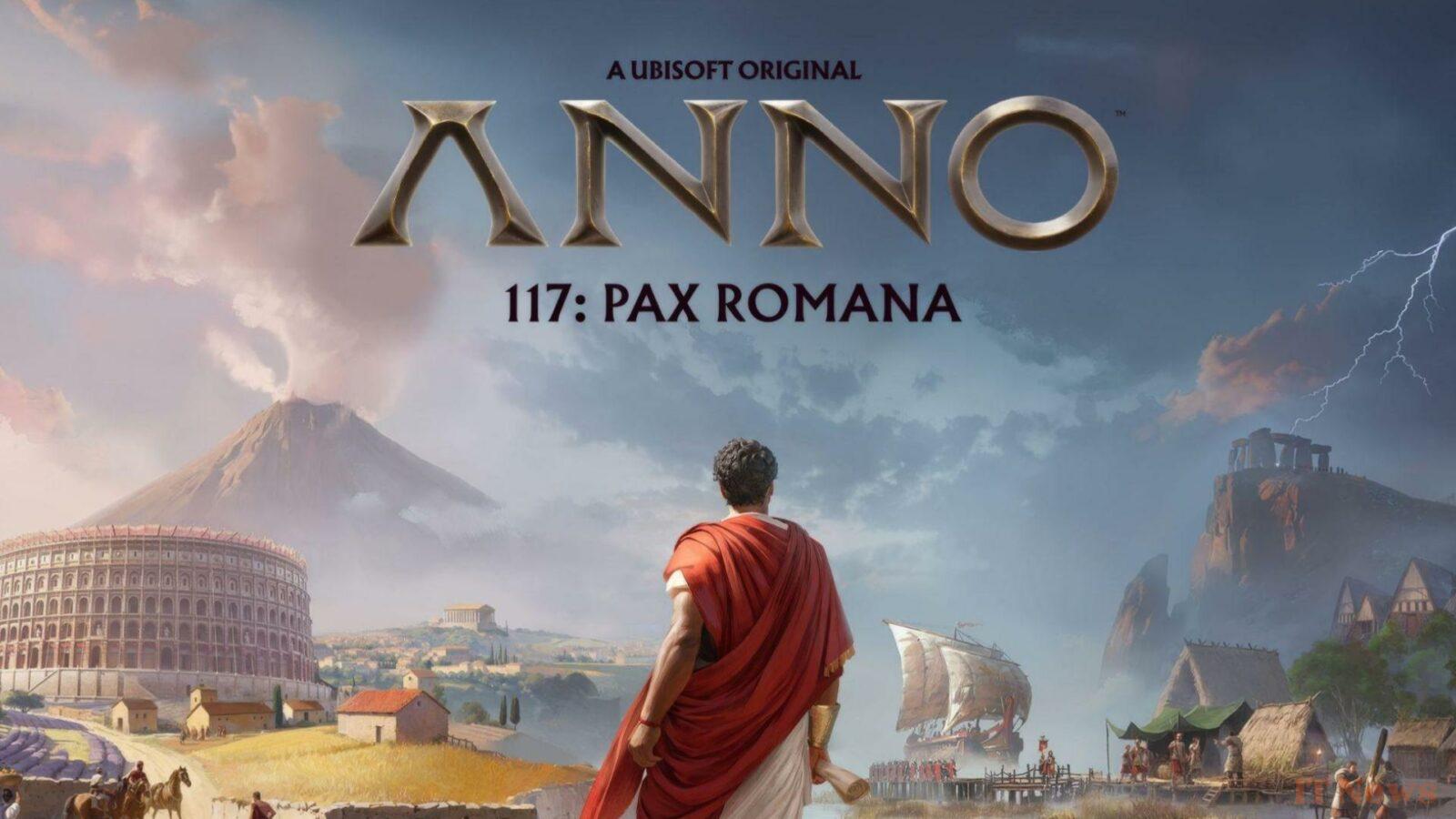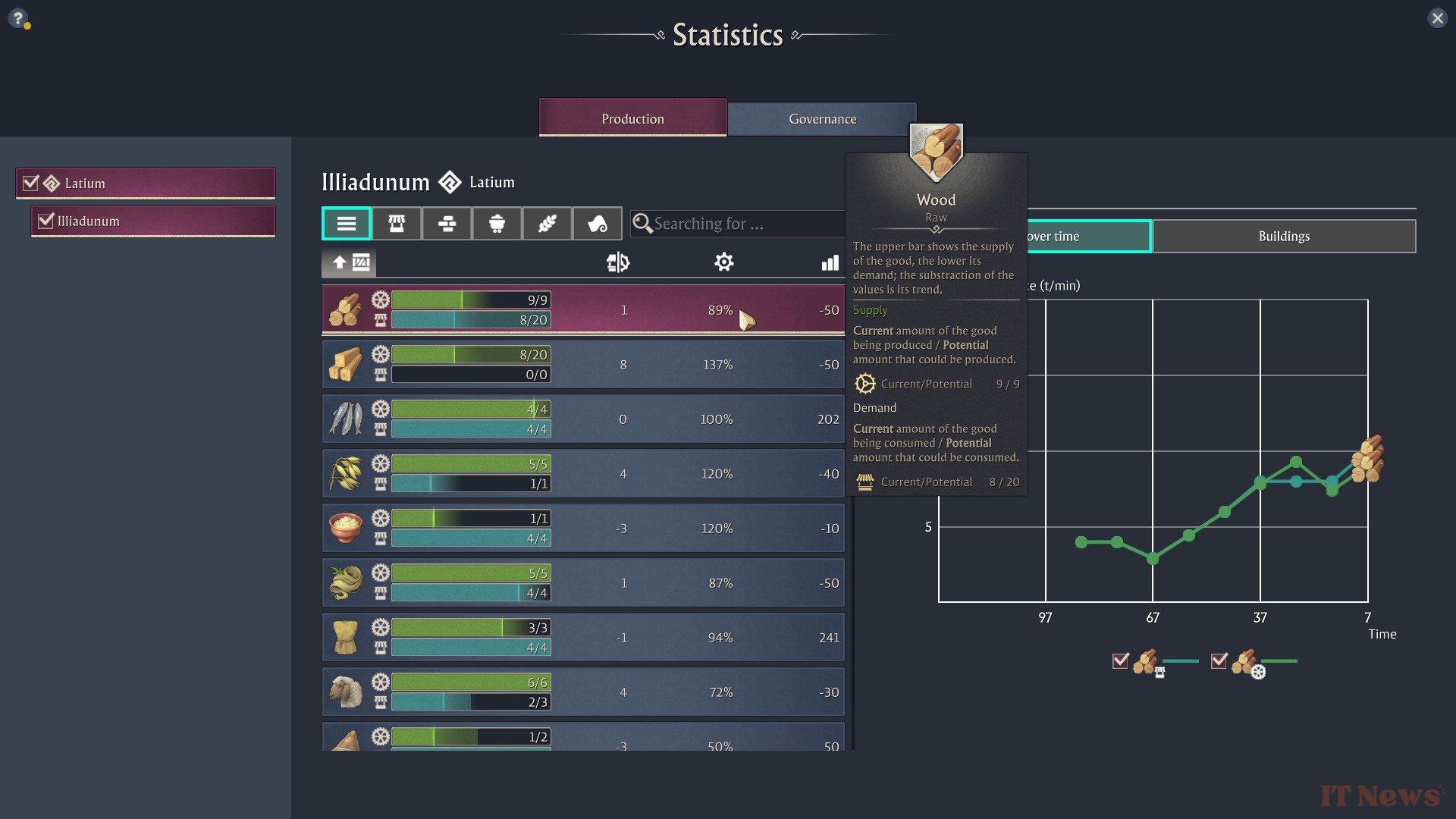For almost 30 years, the Anno series has been offering a unique experience to fans of management and construction games. Six years after the last installment, Anno 1800, which delighted fans by exploring the dawn of the industrial age, it is set to return at the end of the year with a new episode set in the heart of a particularly fascinating period of the Roman Empire. Is there anything to be excited about? Here's our take after a few hours spent with a preview version of the game.
As its name suggests, Anno 117 takes place in the heart of the Pax Romana, which began with the rise of Emperor Augustus. Unusually in the history of this civilization, this was a period of relative peace, and this unusual stability allowed the Empire to prosper quite spectacularly. It's therefore an ideal setting for a new Anno installment.
For those unfamiliar with the series, it has always been more focused on management and building than on combat. The gameplay loop is largely based on building the infrastructure and supply chains that will allow your civilization to flourish, and the result tends to be particularly addictive: there's always a new resource to exploit, a district to develop, a new product to craft, or another decision to make.
Series veterans will be pleased to learn that this effective dynamic is perfectly preserved in Anno 117. Watching your colony gradually expand and come to life remains a particularly rewarding experience, thanks in part to the enormous efforts made by the developers in terms of presentation.
A very successful artistic direction
Because the first element that strikes you in Anno 117 is the remarkable quality of the artistic direction; the troops at Ubisoft Mainz have definitely made a big impact. Even at a less than ideal quality level, in 1080p — a technical limitation linked to the format of the test, which took place via remote streaming — all the elements of the game definitely look great. The characteristic style of the series, fundamentally realistic but elegantly stylized, works perfectly in the context of this idealized Roman Empire. Every alleyway is brimming with life, the vegetation sways in the wind, and artisans bustle about their stalls...
This attention to detail makes the experience particularly immersive, even contemplative. During our test, we found ourselves zooming in on a building or a market several times for the simple pleasure of watching citizens go about their business, like a child fascinated by the activity of an anthill. A real feast for the eyes.
Even more strategic depth
But beyond these obvious aesthetic qualities, the strategic dimension and the management of the economy remain both omnipresent and deep enough to remain captivating without harming the immersion. As in previous installments, it is crucial to carefully manage your resources and priorities to maintain a certain balance, a sine qua non condition for the colony to continue to prosper. But we felt the options were numerous enough to give the player plenty of freedom to shape their civilization according to their preferences.
We were also pleasantly surprised to see some interesting new mechanics, such as religion. Shortly after the start of the game, we were able to build a temple dedicated to one of the deities of the Roman cult. We opted for Ceres, the goddess of agriculture and fertility, to obtain a substantial bonus to the productivity of our fields. But we could have chosen others as well. One example is Neptune; with him, for example, our ships would have been able to move more quickly. This is a significant advantage, given that exploration, trade, and diplomacy still occupy a central place in the gameplay.
All these religions don't fundamentally change the way you play, but they are welcome additions that should ultimately help diversify the player's experience. Even though we weren't really able to judge it during this relatively short test, it's a safe bet that these mechanics reinforce the viability of the different possible playstyles, with all that this implies in terms of replayability.
A reinforced military dimension
Alternatively, we could also have chosen to devote ourselves to Mars, the god of war, who allows us to reinforce... his troops. Yes, you read that right: for the first time in the history of the series, the developers have chosen to integrate a land combat system, and not just a naval one, into their game.
Anno 117 will indeed allow you to recruit and deploy the famous Roman legions to expand your territory. Be careful, however: this does not mean that Anno 117 will approach the formula of conventional RTS, like Age of Empires. These battles will in no way be mandatory. But this option will undoubtedly add a welcome additional layer of complexity, especially given the importance of conquests in the trajectory of the Roman Empire. We can't wait to see how this new system fits into the series' historical foundations.
Conclusion
This short preview didn't give us time to explore all the mechanics in depth, far from it. This is typically the kind of game that requires a lot of time and investment to fully appreciate, and it's a safe bet that some changes completely escaped us.
But overall, it's clear that this sneak peek was very enticing. It's still easy to get sucked into this simulation, which, while not perfectly realistic, remains absolutely captivating—not only because of the freedom it offers the player, but also because of its aesthetic qualities. We can't wait to see if this impression lasts beyond the first few hours once the game is released, in which case we could well be dealing with the best title in the history of the franchise.




0 Comments